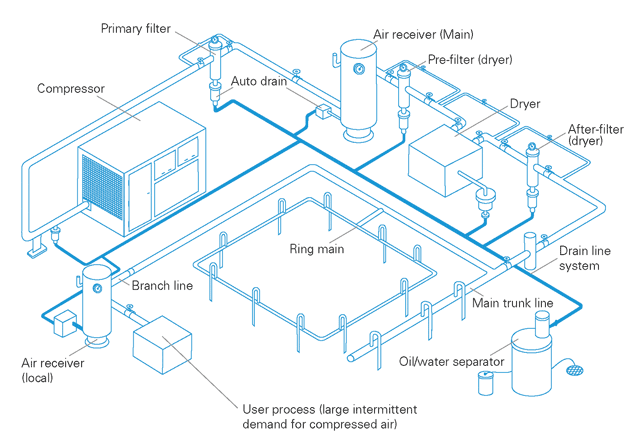The British Compressed Air Society is working with manufacturers to make it possible to compare the energy performance of compressors. BCAS executive director Vanda Jones explains.

With more than 10% of all energy consumed by industry used to compress air, operators are naturally keen to introduce measures to reduce electricity consumption.
Generating compressed air is very energy intensive, representing between 5-30% of a site’s total electricity bill, and as much as 76% of total cost of ownership of the compressor over a ten-year period. Poor practices and housekeeping can also contribute to unnecessary wastage. As a result, at the British Compressed Air Society (BCAS) we advise many operators on some of the practical ways to reduce energy consumption – from compressed air generation to air treatment to distribution and finally, the point of use.
One of the key areas where significant energy savings can be realised is in new capital investment. However, it can be problematic for businesses to compare similar technologies from different manufacturers on a like-for-like basis, because in the UK there is no standard format for presenting performance data.
The kilowatt rating of a compressor does not give an accurate starting point for the machine’s estimated annual electrical use. To calculate this figure correctly, users need to know the specific power rating, and this can vary significantly between compressor units that initially appear to be of similar sizes.

To help address this issue, BCAS is currently working on a datasheet verification programme for the UK.
A similar scheme is already in operation in the US, where the Compressed Air and Gas Institute (CAGI) developed simplified test codes for 60Hz power supply compressors. These have been incorporated as appendices to ISO 1216, the recognised standard for displacement-type compressors.
The datasheets include power consumption and other basic information about compressor performance to help users make comparisons and select the compressor that is best suited to their needs.
CAGI has developed similar datasheets for centrifugal compressors, blowers, and refrigerant compressed air dryers to allow a common basis for comparison of some relevant items to aid in selection of this equipment.
The scheme is accepted by the US market as a fair, unbiased independent comparison tool. However, because the power supply in the UK and Europe operates at 50Hz, the performance data is not transferable, leading to a desire for a similar system to be adopted for the UK market.
The new BCAS scheme
The proposed scheme is currently under development by a BCAS working group, comprising members of the BCAS Compressor Committee representing all the major compressor manufacturers active in the UK market.
Participation from compressor manufacturers is intended to be 100% voluntary. The scheme will be limited to fixed and variable speed drive rotary compressors with 150kW maximum input power, but with scope to expand this in the future.
To maximise the scheme’s benefits for users, all manufacturers’ current product ranges should be included and available for verification, with all costs borne by the manufacturer too.
Independent verification
In the same vein as the CAGI scheme, the success of the scheme will be centered on mandatory independent third-party verification of published performance figures. The verification programme will test a randomised sample of manufacturers’ products within the defined range of the scheme, to make sure that manufacturers’ data is consistent.
With the government’s target of reducing greenhouse gas emissions in the UK to net zero by 2050, a review is under way of the implementation of the Eco Design Directive (Lot 31). As part of this, energy labelling is an area that is being considered closely.
The compressed air industry recognises that a simple “A-F” energy performance rating system, as used for consumer products, would not be suitable for compressed air equipment where there is a wide variation in power consumption. However, a verified datasheet programme which would provide purchasers with a clear and directly comparable measure would be an excellent place to start.
The intention is to make datasheets from all participating manufacturers available by the end of this year, with the first products verified by the end of 2021.

